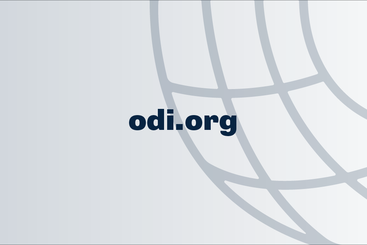The Third Belt and Road Forum took place in Beijing last week marking ten years of the Belt and Road Initiative (BRI), China’s flagship outbound economic engagement initiative.
Media attention has focused on lending and FDI in developing countries. However, a less talked about feature of China’s outward economic expansion is the slow and steady progress in the internationalisation of China’s currency, the Renminbi (RMB) over the past few years. Whilst it is unlikely that RMB will overtake USD anytime soon, due in part to lack of convertibility in the capital account and China’s strict capital controls, the gradual RMB internationalisation is increasingly being facilitated by China’s expanding trade.
While the RMB has come a long way since its use was first trialled for cross-border trade settlements in 2009, it has gradually expanded its presence on the global financial scene. To increase the use of RMB for trade and investments, China has established offshore RMB hubs and central bank bilateral swap agreements. Overseas institutions started issuing panda bonds (RMB denominated bonds) in China’s exchange trade market. China has also built up its international interbank payment system, called the Cross-Border Interbank Payment system (CIPS).
China's ascent as a global economic powerhouse has played a significant role in the internationalisation of the RMB. China’s accession to the World Trade Organization (WTO) in 2001 marked a pivotal moment in its economic rise, propelling China into the ranks of the world's leading trading nations. As China has become a stronger player in global trade, since the launch of BRI in 2013, the RMB has naturally gained prominence as an international currency.
Over the last ten years, the BRI has contributed to China’s continued export growth, increasing its exports 63% (UNCTAD) in the last decade. The BRI has successfully strengthened economic ties and increased Chinese infrastructure investment across Asia, Europe, and Africa, involving significant financial flows between China and BRI partner countries. Many BRI-related transactions are conducted in RMB, contributing to its growing role in global finance. To illustrate, in January-August 2023 the value of cross-border transactions in RMB by institutions of participating BRI countries increased 90% year-on-year. Nevertheless, despite the promotion of RMB by China as a ‘petroyuan’ in the Middle East, a term used for oil trade in RMB, progress does not seem to be moving that fast due to free convertibility and liquidity of the ‘petrodollar’.
A study by Tovar et al. in 2018 has quantified the currency diversification and highlighted the transformation of the international monetary system from a bipolar system, dominated by the U.S. dollar and the euro, to a tripolar one, with the Renminbi's inclusion. This shift underscores the currency's growing importance.
A wide adoption of RMB may also imply stronger spillover effect of China’s monetary policy. More central banks around the world are actively diversifying their portfolios by increasing non-USD foreign reserves, which has also contributed to the internationalisation of the RMB. In a significant move in 2016, the International Monetary Fund (IMF) added the RMB to the Special Drawing Rights (SDR) basket, solidifying its status as a global reserve currency. Among other factors, central banks are attracted by higher-yielding securities offered on the renminbi bond market as well as the low currency and bond volatility in the RMB.
In August 2023, the RMB retained its position as the fifth most active currency for global payments by value of payments, with a share of 3.47% (SWIFT). This is a relatively small share for an economy as large as China. In 2023, China accounted for 17% of global GDP, yet the use of RMB remains small accounting for 3.47% of payments by value and 2.3% of official foreign exchange reserves. In comparison United States account for 25.8% of global GDP, yet the USD accounts for 48.03% of global payments and 54.55% of official foreign exchange reserves. This represents a drop in the share of reserves held in U.S. dollars by central banks by 12 percentage points since the turn of the century, from 71% in 1999 .
The RMB globalisation index illustrates steady growth in offshore RMB usage, primarily driven by its use in trade settlement and direct investment. More recently, China’s Central Bank has pushed for greater use of RMB in settlement of cross-border trades, showing a clear change of strategy in pushing the internationalisation of RMB in the recent years.
The Russian invasion of Ukraine has brought global geopolitical tensions to the forefront, which has boosted the use of the RMB in China-Russia bilateral trade due to Russia needing to increase its use of the RMB because of international sanctions and the freezing of its international assets. According to the Russian Central Bank, the use of RMB in Russia jumped from 4 to 23% in 2022. Russia-China trade has seen a big increase since the beginning of war, in January-August 2023 it has amounted to more than 155 billion USD, year-on-year increase by 74% in January-August 2021 and 32% higher than in January-August 2022. Most of the 88 billion USD commodities trade between Russia and China is now conducted in roubles and RMB. Another example of the shift to RMB is the Russian National Wealth Fund, which currently holds 60% of its assets in RMB (increasing it twice from 30% before the war) and has excluded USD from its portfolio.
China stands to gain numerous advantages from the internationalisation of the RMB. A more widely accepted RMB can reduce its reliance on the U.S. dollar, thereby mitigating exposure to U.S. monetary policy and economic cycles.
The internationalisation of the RMB is an ongoing process, with a promising future for China ahead. Nevertheless due to the tight capital controls in China which prevent capital outflow, despite its growing use, the RMB is not likely to replace the U.S. dollar in the nearest future. As discussed above, RMB’s increased usage in Russia-China bilateral trade has had a strong impact on the internationalisation of the currency in the last two years. Going forward, it is likely that we will see more of internationalisation of RMB in the BRI partner countries, especially those with larger trade links with China, driven by increasing trade settlements in domestic currencies and RMB.



